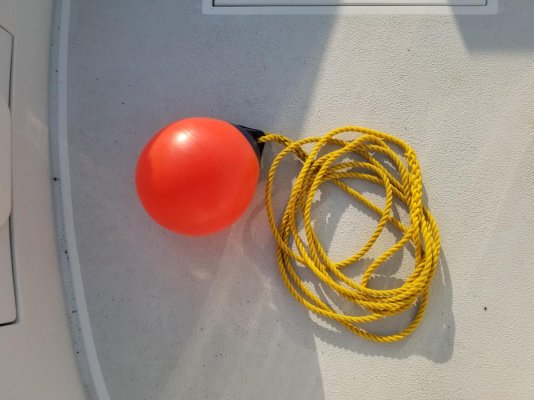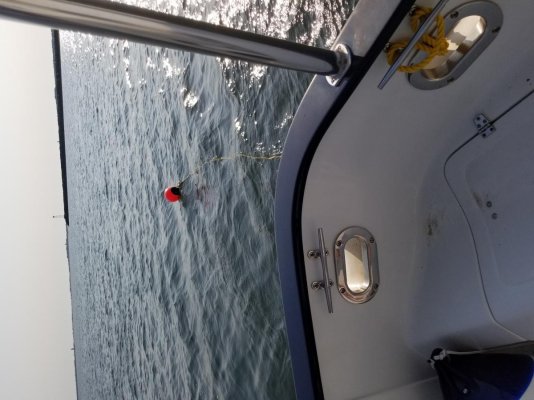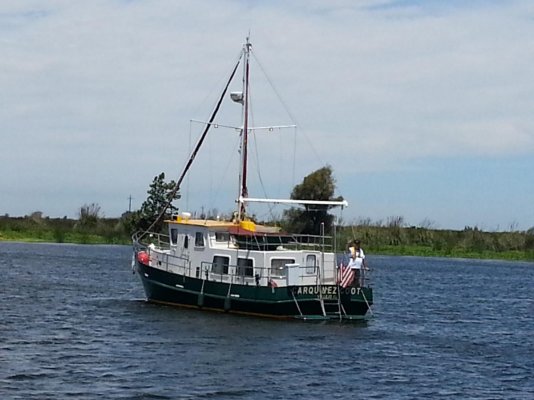If you are a couple cruising, the drills I have seen and done, are iffy at best.
We have done MOB drills on a trawler and sailboats, but mostly under sail, which is soooo much more difficult. Under power is easier.
The big issues with MOB:
- Knowing someone fell overboard.
- Finding/Figuring where they went overboard.(One might see or hear the person go over so this might not be an issue.
- Seeing them.
- Helming the boat to the person in the water.(Easier under Power)
- Getting them back aboard.
With a two person crew all of these are really difficult.
When we were on a trawler, we were in a gale, the boat was moving around pretty good, and I went on the back and side deck to take some photos. I quickly went back in the boat because if I fell overboard, I was dead. The rest of the crew was in the pilot house, and even if they knew I went overboard immediately, so they knew WHERE I was, SEEING me was going to be very difficult with the 6-8 foot steep waves and white caps. Getting me back on board would have been the easy part and it would not have been easy.


IF you see the person go overboard, throw every thing you can that floats into the water. You really need one of the floating MOB poles but even these are going to be hard to see in medium sized waves. Big and bright is what is needed at a minimum. If the chart plotter has a MOB function hit that button.
A Personal Locator Beacon(PLB) is the best solution to help find and see the POB.
Seeing a person's head in the water is very difficult. For practice, toss a small head sized buoy in the water and you will see, well, not see, what I mean. With just a bit of waves that small head is hard to find which is why you want to toss as much stuff in the water as you can to help you find where the person went into the water. Having said that, stuff that is light and floating, is going to get blown down wind from the POB.
Keeping your eye on the person in the water is critical, yet if two people are on the boat, and one is in the water, that is impossible to do. One person has to handle the boat, and on a trawler, that person is likely going to loose sight of that person in the water as they go to the helm. Even on a sailboat with a cockpit, this is hard to do, not only because the person has to helm the boat, but they also have to handle the sails to get back to the person in the water. It is impossible in that situation to keep your eye on the person in the water.
Once you get the boat to the person, you have to figure out how to get them back on board. If the POB is still able, they might be able to climb a ladder but it is likely one will have to use a life sling, a bight of rope, net like objects, etc. to get the POB back in the boat. This is really a problem. The person in the water might not be able to help at all...
In the last week or so, a woman went swimming off a beach in the Netherlands. A couple in a sailboat somehow found the woman 11KM off shore.

What are the odds? The problem was the couple on the sailboat could not get the woman out of the water. They had to call the coast guard which sent a helicopter to get the woman out of the sea. The swimmer could have died waiting for that helicopter. What would the couple have done if one of them had gone in the water?
Later,
Dan







 Tis timely for this discussion.
Tis timely for this discussion.